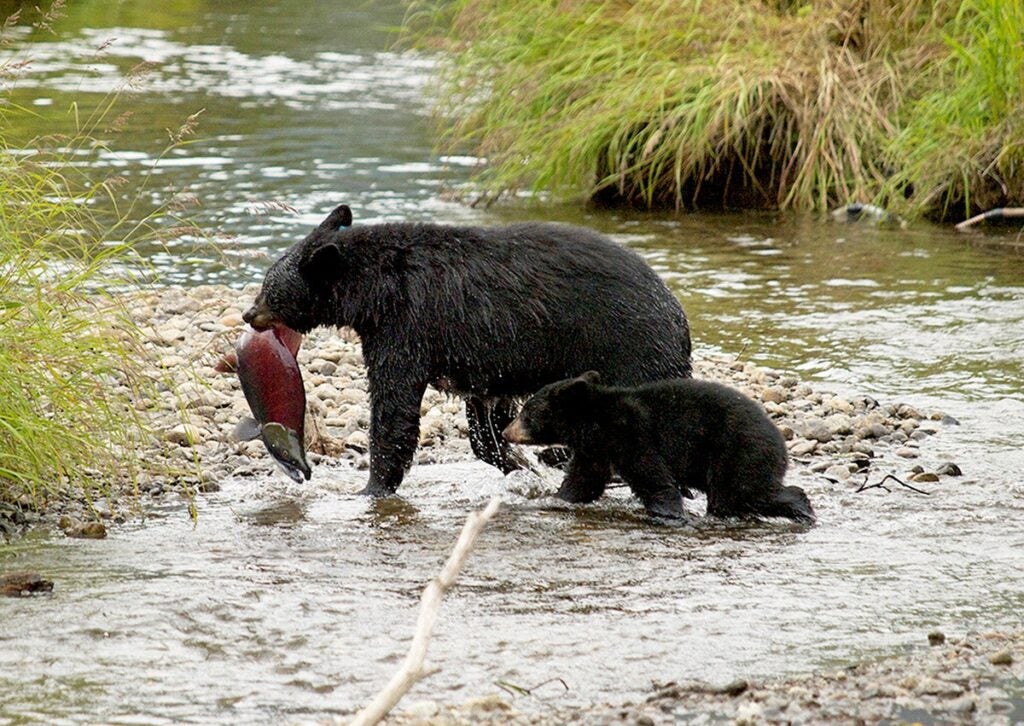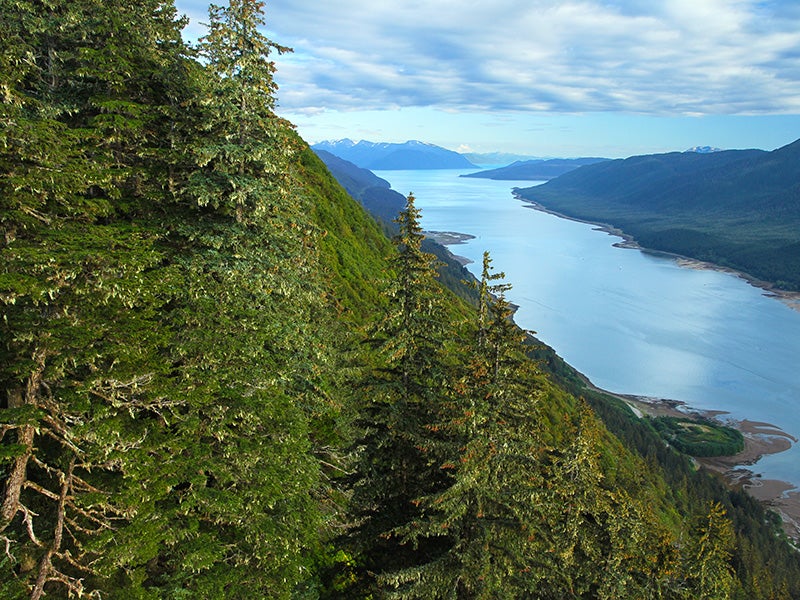The Forest Service Wants to Hear from the Public on Tongass National Forest Management
U.S. Forest Service officials are traveling throughout Southeast Alaska to hear from residents about how they want our nation’s largest forest managed in coming decades.
U.S. Forest Service officials are jumpstarting participation in the Tongass National Forest plan revision by holding a series of community workshops this month throughout Southeast Alaska to provide information to the public and seek feedback.
This is a great opportunity for Tribes, communities, forest advocates, business owners and anyone who cares about the Tongass National Forest, and the livelihoods it supports, to help shape its future. For example, the plan revision is one way the Forest Service can make good on its commitment to end commercial, old-growth logging on the Tongass and refocus its management vision on supporting resilience, recreation, and restoration.
Now is the time to get involved
Anyone is welcome to join these meetings to hear more about the forest planning process and how it works – and to begin to share thoughts about the current direction of the Tongass management plan and what the future should look like in America’s largest national forest.
The community workshops are scheduled throughout April, beginning April 2, and ending April 28. For a list of scheduled workshops and other ways to get involved, visit the Forest Service’s Tongass National Forest website.
If you live in Southeast Alaska, we encourage you to attend one of the in-person meetings if you can. If you don’t live in one of the communities where a meeting is being hosted or if you missed the meeting in your community, you may request a presentation or provide comments by email
While management of the Tongass National Forest is currently headed in a positive direction with a new focus on sustainability through the Southeast Alaska Sustainability Strategy (SASS) and National Roadless Rule protections currently in place (Earthjustice is continuing to defend the rule in court on behalf of clients), there is more work to do. One important way that you can encourage the Forest Service to keep things going in the right direction, and to end all commercial old-growth logging throughout the Tongass, is to make your voice heard during the plan revision process.
What is the SASS?
The SASS, initiated in July 2021 by the Forest Service, is a strategy for the Tongass that would end large-scale old-growth timber sales, focusing instead on forest restoration, recreation, climate protections and improving watersheds and other wildlife habitat. The SASS supports Roadless Rule protections, advocates for meaningful engagement with Tribal Nations and identifies opportunities for diverse investments in the region that support sustainable regional economies.
While the SASS is, overall, a helpful strategy, it does not go far enough to make a permanent shift away from logging and it is not a durable, enforceable rule—it’s an internal policy that could shift with a change in leadership at the Forest Service. Although, under SASS, the Forest Service has committed to ending “large scale” old growth logging, the Forest Service has continued to sell old-growth trees of the Tongass through a series of smaller sales. These small sales add up and it’s past time for the Forest Service to finally put an end to commercial old-growth logging and, instead, help local mills transition to second growth. The Forest Plan revision is an opportunity to firmly and durably shift forest management away from old-growth logging and meet the SASS commitment.

In the Tongass National Forest, on Prince of Wales Island, Alaska. Earthjustice has worked for decades to defend the remaining ancient trees of the Tongass and in the Pacific Northwest. (Colin Arisman)
Tongass exempted from National Old-Growth Amendment
In another important recent development that affects the Tongass, the Biden Administration announced a nationwide forest plan amendment in December 2023 that would protect old-growth trees from commercial logging. Earthjustice supports that proposed rule but regrettably, an exemption was included in the proposed rule allowing old-growth logging to continue on the Tongass National Forest where “necessary to allow for implementation of the Southeast Alaska Sustainable Strategy (SASS).”
Allowing that exemption to stand is not consistent with the nation’s global climate commitments and the SASS goals of supporting the needs of the region – and because the SASS is only an internal plan and not durable, the exemption makes the Tongass National Forest vulnerable in the event of a change of direction by the forest officials. Removing the exemption is vital to protecting the Tongass and will help keep the new forest plan focused on a sustainable vision for the forest.
Hopefully, the point of this article is now becoming clear. While Tongass management is currently headed in a sustainable direction that benefits Tribes, local communities, sustainable businesses, our climate (the Tongass also functions as an important carbon sink), fish, wildlife and the environment, we will need to speak up to stay our current course and protect the Tongass into the future.

A black bear carries a salmon as it crosses a stream with a cub in the Tongass National Forest. (Kenneth J. Gill / CC BY 2.0)
How the planning process works
Every national forest in the United States is governed by a Land Management Plan (Forest Plan) in accordance with the National Forest Management Act of 1976. The Tongass National Forest Plan was originally developed over 25 years ago, in 1997 and was most recently amended in 2016. New rules require forest plans to be revised every 15 years. This process provides a guide for future forest management by creating standards for projects and activities and identifying areas where those activities are appropriate.
The process is only just beginning. These listening sessions are still part of preparation for the plan revision in which members of the public are educated about the process and the Forest Service begins to take public input. In 2024, the Forest Service plans to provide official notice by publishing the process’s initiation in the Federal Register. After that, there will be more public engagement and comment opportunities when the Forest Service publishes an environmental impact statement, and, eventually, a final plan and record of decision (currently projected for 2028). This Forest Service website details the current timeline.
While there is a lengthy process ahead, the earlier Forest Service officials hear from us about what we want for the Tongass, the better. Do you have ideas regarding the future of the Tongass National Forest? Now is the time to begin having your voice be heard.
Opened in 1978, our Alaska regional office works to safeguard public lands, waters, and wildlife from destructive oil and gas drilling, mining, and logging, and to protect the region's marine and coastal ecosystems.
